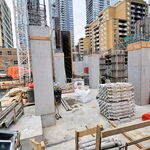TheTigerMaster
Superstar
The key question here is how and who will pay for this? They have no plan at all other than doing an EA.
You'll have to wait for the next election season for the "we're now looking for private sector partners" announcement.
The following election will be the "we're initiating a RFP" announcements.
And the following election will be the "okay, I suppose we actually have to build this thing for reals now that you've fallen for our bs election promise six times" announcement.
(I clearly don't have any faith this will ever get off the ground. Nice to see Canada is still a leader in HSR study, though).




